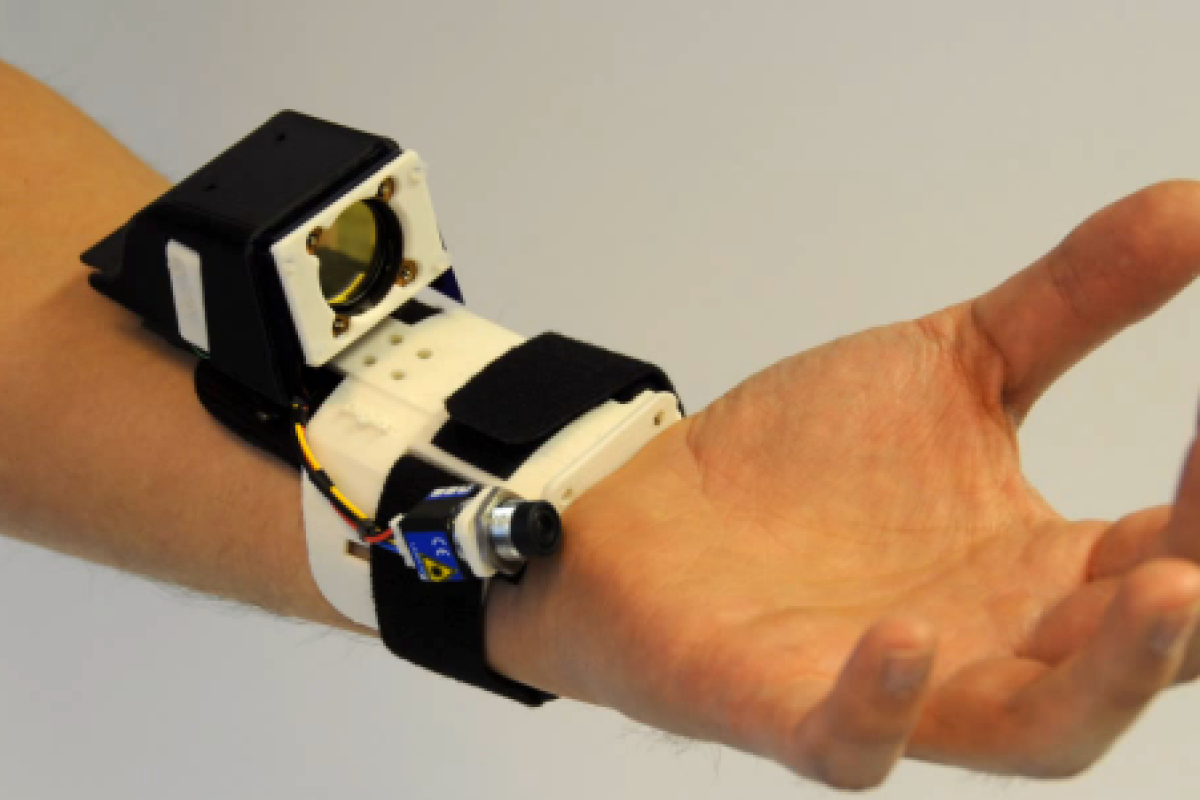As evidenced by the Kinect system, Microsoft has a serious dedication to making user interfaces that track the movement of its users. The company has shown a new technology, which it is calling Digits, that tracks hand movements through a device worn on a user's wrist. This means there are no gloves needed.
Microsoft's new project is able to detect hand positions in 3D and translate them into software commands – perhaps a user could swipe their hand to the side to turn a page in a book, or pinch their fingers to zoom in on a document. The device can also display a human hand on-screen when necessary.
The prototype shown off by Microsoft at the UIST 2012 symposium has an IR (infrared) camera, an IR laser line generator, an IR diffuse illuminator, and an inertial-measurement unit (IMU). The prototype is not practical in terms of size, but Microsoft hopes to shrink it down to about the size of a common wrist watch by the time it is finished with the project.
At some point, Microsoft hopes to make this device a key method of input for tablets, cell phones, and Kinect. It could combine the finite detail Digits provides with the full body tracking of Kinect to provide gamers with a more realistic experience.
Another key aspect of this device is that does not rely on any external infrastructure. Essentially, this means that users are free to move about while still interacting with their electronics.
The potential uses for this device are quite exciting, and I look forward to seeing where this could go down the road. It could potentially replace video game controllers, while still offering a precise level of control that other motion trackers cannot offer. It could also change the way users interact with their computers and portable electronic devices.
The video below from Microsoft Research shows the device in action.
Source: Microsoft Research









